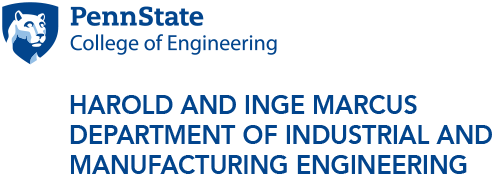
Researchers from Penn State and Geisinger Health System developed a model to predict a patient’s risk for needing further medical care three days after being discharged from the hospital.
Researchers develop new method to identify patients at risk for readmission, emergency room visits or death
6/4/2018
UNIVERSITY PARK, Pa. — Historically, hospital patients have been at a high risk for adverse effects after they are discharged, according to the Institute of Medicine. These effects can be defined as unplanned bad circumstances that are directly related to the patient’s diagnosis, clinical conditions or the care they received while in the hospital. Many times these events lead to the patient being readmitted, going to the emergency room or, even worse, dying.
Researchers from Penn State and Geisinger Health System teamed up to find a way to predict a patient’s risk for needing further medical care three days after being discharged from the hospital. The model they developed is known as REDD, which stands for readmission, emergency department (ED) or death.
The research team developed the REDD model by using clinical, administrative and socio-economic data from patients who were admitted to the Geisinger Health System over two years.
“REDD is a machine learning model designed to predict which patients will be at a high risk of adverse events after they are discharged,” said Deepak Agrawal, one of the Penn State researchers. “Using the REDD model, we were able to leverage large amounts of data to identify these high-risk patients at the point of discharge, which helps physicians target interventions to effectively reduce adverse events.”
According to a 2014 Agency for Healthcare Research and Quality report, hospital readmissions cost the United States $41 billion, as of 2011. Medicare's tab alone was $26 billion annually, $17 billion of which was attributable to avoidable re-hospitalizations. This was before Centers for Medicare and Medicaid Services started financially penalizing participating hospitals for 30-day readmissions.
The researchers came to the conclusion that readmissions after 30 days tend to be related to factors such as poor home environment, limited access to service and little social support.
“However, readmissions closer to discharge are more likely to be related to factors that are actually present but are not identified at the time the patient is discharged,” said Soundar Kumara, Allen E. Pearce and Allen M. Pearce Professor of Industrial Engineering, who led the Penn State research team.
Researcher Cheng-Bang Chen, an industrial engineering doctoral candidate, added that the more time that passes after a patient is discharged, the longer it may take the treating physician to read through a lengthy chart — particularly if the patient is experiencing a time-sensitive event — and sort out what may have landed the patient back to the hospital.
“After 30 days, physicians must read through the patient’s records, determine the after care treatment they may or may not have received, find out if medications were taken, determine if any other drugs were in their system, see if they worked with their primary care physician on a new course of treatment, etc. There are many more factors that need to be known to identify what could have gone wrong with the initial treatment,” he said. “Our model focuses on just three days after discharge, which gives physicians a better chance to improve their processes when treating the patient in the hospital setting.”
In response to the Medicare/Medicaid penalty, Geisinger took the initiative to effectively reduce the readmission rate by targeted intervention, resulting in better quality of care and reduced costs by piloting the REDD model.
“During the six months the program was piloted, Geisinger tracked patients that were identified as high risk and implemented additional services to try to minimize the chances of a patient being readmitted, visiting the ED or dying,” said Eric Reich, manager of health care re-engineering at Geisinger.
The intervention that physicians applied to the high-risk patients is multifaceted and includes: scheduling a return appointment with the patient’s primary care provider; educating the patient about their prescriptions and post-discharge care plans; having the inpatient clinical pharmacist review the discharge medication list after reviewing the provider’s recommendations; having the patient’s prescriptions filled before discharge; and having the hospital check on any patient discharged to a skilled nursing facility the day after discharge.
The REDD model was tested and piloted at Geisinger, however due to a lack of nursing resources at the hospital at the time, there were no reliable estimates on the reduction in readmissions.
Reich still considers the project a success that can be universally introduced in hospitals.
“If the REDD model was fully implemented and aligned with clinical workflows, it has the potential to dramatically reduce hospital readmissions,” he said. "Through these data-driven predictive models, hospitals will be able to provide better quality care while efficiently allocating their scarce resources at the same time.
“This research was truly ahead of its time and we were surprised by the results. We brought together a group of highly skilled, educated, and focused individuals from Penn State and Geisinger to determine the risk of not just readmission, but also ED visits and death. We hadn’t seen anything like this before.”
The research, conducted from 2012-2014, was funded via a Geisinger Health Plan Grant and was published in 2016 in the Medical Care Journal. The success of the REDD project has led to new collaborative research projects between Geisinger and Penn State.
“This work has given me immense satisfaction,” said Kumara. “It’s not just a published piece of research, but a real model that is potentially useful to hospitals and patients across the country.”
Agrawal graduated with dual a doctoral degree in industrial engineering and operations research in August 2017. He is now an operations research consultant at American Airlines.




